- Home
- Edgar Allan Poe
The Science Fiction of Edgar Allan Poe (Penguin Classics) Page 51
The Science Fiction of Edgar Allan Poe (Penguin Classics) Read online
Page 51
In ‘Eldorado’, published the following week in The Flag of Our Union (21 April 1849), the ‘gallant’ reappears not as an alchemist this time but a quixotic ‘knight’ with rueful countenance:
And o’er his heart a shadow
Fell as he found
No spot of ground
That looked like Eldorado.
14. (p. 328) the house of Gutsmuth & Co… in Gasperitch Lane: Transmuting the names of two well-known authors of geography text-books – whom Poe had listed in a review four years earlier – the Germans Johann Cristoph F. Gutsmuths and Adam Christian Gas-pari.
15. (p. 328) the flash-name of the ‘Dondergat’ : Poe’s English coinage linked to his Old Norse and German producing an appropriately sham, or stage, effect of thunder and lightning.
Select Bibliography
W. K. WIMSATT, JR, ‘Poe and the Chess Automaton’, American Literature vol. 11 (1939), pp. 138–51
BURTON R. POLLIN, ‘Poe’s “Von Kempelen and His Discovery”: Sources and Significance’, Études Anglaises vol. 20 (1967), pp. 12–23; reprinted as Discoveries in Poe (Notre Dame: University of Notre Dame Press, 1970), ch. 10
THOMAS HALL, ‘Poe’s Use of a Source: Davy’s Chemical Researches and “Von Kempelen and His Discovery” ’, Poe Newsletter vol. 1 (1968), p. 28.
Appendix
1748–1848: SELECT CHRONOLOGY OF POST-NEWTONIAN DEVELOPMENTS IN PHYSICS, ASTRONOMY, ELECTROCHEMISTRY, AERONAUTICS ETC. IN THE CENTURY PRECEDING THE APPEARANCE OF Eureka
1745–6
Invention of the Leyden bottle
1747
Benjamin Franklin’s work on electric forces
1749
Euler’s Analysis Infinitorum
1750
Wright’s Theory of the Universe (supported later by Herschel’s discoveries)
1755
Kant’s nebular theory
1758
Dollond’s achromatic telescope
1760
Lightning-rods put up by Franklin in Philadelphia
1766
Cavendish isolates ‘inflammable air’ (called ‘hydrogen’ by Lavoisier)
1769
Watt patents his steam engine with separate condenser
1772
Bode publicizes Titius’ Law of Distances (of the planets)
1773
Montgolfier brothers’ attempts at flight with fire balloons
1774
Maskeleyne’s test on the Earth’s weight at Mt Schiehallion. Priestley isolates ‘dephlogisticated air’ (called ‘oxygen’ by Lavoisier
1775
Volta’s ‘electrophorus’
1781
Herschel’s discovery of Uranus
1783
Herschel’s first list of double stars. First manned air flight in a hydrogen balloon
1785
J. P. Blanchard and Dr John Jeffries cross the English Channel by air
1786
Herschel’s list of 1,000 nebulae. Galvani’s observation of ‘animal electricity’
1796
Laplace’s Système du Monde
1799
First part of Laplace’s Méchanique Céleste printed
1800
Invention of the ‘Voltaic Pile’. Nicholson’s and Carlisle’s discovery of chemical effects of electric current. Herschel’s discovery of infra-red rays
1801
Young’s wave-theory of light. Piazzi’s discovery of Ceres (orbit calculated by Gauss). Richard Trevithick’s high-pressure engine – progenitor of all steam locomotives
1802
Wollaston’s observation of seven dark lines in sun-spectrum. Herschel’s third list of nebulae
1803
Herschel’s theory of binaries
1805
Grotthuss’ theory of electrolysis
1806
Herschel’s theory of motion of the solar system in the direction of Hercules. Davy’s work on electrolysis
1808
Dalton’s A New System of Chemical Philosophy (2 vols., 1808–27)
1809
Gauss’ Theoria Motus Corporum Celestium (1809–16). Sir George Cayley’s theory of flight and fixed-wing flying model aircraft
1811
Herschel’s theory of development of stars from nebulae. Poisson’s mathematical theory of heat
1815
Prout’s hypothesis (on atomic weights)
1819
Oersted’s discovery of magnetic effects of current
1822
Lamarck’s Histoire naturelle des animaux sans vertèbres completed. Ampère’s Obsérvations électro-dynamiques
1823
Fraunhofer’s observation of spectra of fixed stars. Faraday liquifies gases
1824
Arago’s discovery of magnetic effect of turning copper plate
1826
Lobachevsky’s geometry. Ohm’s law
1827
First camera pictures made by Niepce. Ohm’s Galvanische Kette mathematisch bearbeitet
1829
Faraday and Henry make observation on electromagnetic induction
1830
Lyell’s Principles of Geology
1831
Faraday’s electromagnetic rotation theory – foundation of the dynamo, motor and electrical industry
1832
John Herschel’s observation on orbits of double stars
1833
Herschel’s list of northern stars completed
1834
Faraday’s laws
1836
John Ericsson’s marine screw propeller
1837
Faraday’s observation on electrostatic induction. Whewell’s History of the Inductive Sciences. Wheatstone’s and Cooke’s electric telegraph
1838
Parallax of star (61 Cygni) measured by Bessel
1839
Gauss’ general discussion of inverse-square forces. Parallax of α – Centauri measured by Henderson. Daguerre’s process (camera-pictures)
1840
Draper takes camera pictures of the Moon. Whewell’s Philosophy of the Inductive Sciences
1842
Discovery of Doppler effect. Weight of the Earth measured by Baily, using Cavendish’s method of 1798
1844
Morse’s telegraph transmits messages from Washington to Baltimore
1845
Discovery of Spiral Nebulae with Parsonstown telescope. J. C. Adams’s computation of a new planet
1846
Discovery of Neptune from the work of Leverrier and Adams. Heating effect of the Moon measured by Melloni. Operations done under ether
1847
Sir John Herschel’s Results of Observations at the Cape of Good Hope
[June 1848 Eureka published]
1849
Velocity of light measured by Fizeau
1850
Velocity of light measured by Foucault. Clausius’ second law of thermodynamics
1851
Foucault’s pendulum test on the Earth’s motion
1864–7
Clausius’ Die mechanische Wärmetheorie
1873
Clerk Maxwell’s A Treatise on Electricity and Magnetism: laws of electromagnetic radiation, the foundation of radio, radar, television
1876
Clerk Maxwell’s Matter and Motion
1. Coleridge, On the Definitions of Life Hitherto Received: Hints towards a more Comprehensive Theory (1848).
2. Clarified by Coleridge as follows: When, therefore, I affirm the power of reproduction in organized bodies to be magnetism, I must be understood to mean that this power, as it exists in the magnet, and which we there (to use a strong phrase) catch in the very act, is to the same kind of power, working as reproductive, what the root is to the cube of that root. We no more confound the force in the compass needle with that of reproduction, than a man can be said to confound his liver with a lichen, because he affirms that both of them
grow.
3. Dostoyevsky, Wremia vol. 1 (1861), p. 230.
4. Hubert Matthey, Essai sur le merveilleux dans la littérature française depuis 1800 (Paris, 1915), p. 237.
H. Bruce Franklin traces the title back to 1905: ‘ “Science in Romance”, an anonymous article in the Saturday Review, cited Poe (accusingly) as “probably the father” of that “pseudo-science” fiction “which still has its living practitioners in Dr Conan Doyle and Mr H. G. Wells”. In 1909, Maurice Renard in “Du merveilleux scientifique et son action sur l’intelligence du progrès” (Le Spectateur, Revue Critique) called Poe the true founder of the marvellous-scientific romance…’ (Future Perfect: American Science Fiction of the Nineteenth Century, New York: Oxford University Press, 1966, p. 93).
5. Eureka, p. 252.
6. Clarke Olney, ‘Edgar Allan Poe: Science Fiction Pioneer’, Georgia Review, vol. 12 (1958), pp. 416–21.
7. Letter to Sarah Helen Whitman (Fordham: 1 October 1848).
8. Condorcet, Essai sur l’application de l’analyse aux probabilités des décisions rendues à la pluralité des voix (1785).
9. The Marquis de Laplace considered the philosophical and social implications of his mathematical classic in Essai philosophique sur les probabilités (1814).
Antoiné Cournot, following Poisson, first applied mathematics to economic forecasting in Exposition de la théorie des chances et des probabilités (1843). Adolphe Quetelet, supervisor of Belgian statistics, first devised rules for modern census taking, by formulating the theory of the ‘average man’: Sur l’homme et le developpement de ses facultés (1835); translated into English as A Treatise on Man (1842).
It was James Clerk Maxwell, in 1859, who was to apply the calculus of probabilities, not to games or public affairs, but to matter in motion.
10. ‘The Murders in the Rue Morgue’, 1841.
11. Introduction to ‘The Mystery of Marie Rogêt’, 1842.
12. H. Bruce Franklin, Future Perfect, p. 95.
13. Letter to George E. Isbell (New York: 29 February 1848).
14. H. Bruce Franklin, Future Perfect, p. 96.
15. ‘Dreamland’, 1844.
16. First written in 1829, but revised with frequent variants until 1843.
17. ‘The Colloquy of Monos and Una’, pp. 92, 93, 90.
18. cf. Georges Poulet: ‘A sort of temporal circle surrounds Poe’s characters. A whirlpool envelopes them, which, like that of the Maelström, disposes its funnel by degrees from the past in which one has been caught, to the future in which one will be dead. Whether it moves in the limitless eternity of dreams or in the limited temporality of awakening, the work of Poe thus always presents a time that is closed.’ (Studies in Human Time, 1949, translated by Elliott Coleman, Baltimore: The Johns Hopkins Press, 1956, PP. 330–34.)
19. ‘Mr Griswold and the Poets’ (Boston Miscellany, November 1842); Works, vol. 11, p. 148.
20. Paul Valéry, ‘Situation de Baudelaire’, 1924, translated by James R. Lawler in Leonardo, Poe, Mallarmé (Princeton University Press, 1972), p. 207.
21. So Franklin accepts Moskowitz’s insensitive categorization of the tales (into those where ‘the mood or effect is primary’ and those where ‘the idea was paramount’) to further his own didactic argument: ‘In the first, the science is merely a device; in the other, the fiction is merely a device’ (Future Perfect, pp. 97–8).
22. Lucian, The True History, Book 1, lines 56–9.
23. Constance Rourke, American Humor: A Study of the National Character (1931), ch. 6, p. 148.
24. Doings of Gotham (Letter II, May 1844), P. 34.
25. Constance Rourke, American Humor, ch. 2, ‘The Gamecock of the Wilderness’, sec. 6, pp. 56–7.
26. ‘Ces Américains qui aiment tant à être dupés’, Baudelaire, note to the final instalment of ‘Hans Pfaall’, Le Pays, 20 April 1855.
27. Of which an early, and most notorious, instance is his Conchologist’s First Book (1839).
28. As the ‘intuitive leaps’ or hypotheses of a scientist must be followed by experimental enquiry, so the intuitive expression of a poet (which is the poem) must be followed by explanatory analysis (or criticism). The ‘ “Raven” was not complete until Poe had written the explanatory “Philosophy of Composition” ’. (Edward H. Davidson, Poe, A Critical Study, 1957, p. 246.)
29. Eureka, p. 300.
30. Eureka, p. 292.
31. Eureka, Preface.
32. Eureka, p. 222.
33. Eureka, p. 227.
34. Eureka, p. 304.
35. Eureka, p. 236.
36. Eureka, p. 241.
37. And now – this Heart Divine – what is it? It is our own.’ (Eureka, p. 307). cf. Denis Marion, La Méthode intellectuelle d’Edgar Poe (Paris, 1952).
38. First printed as ‘Von Jung, the Mystic’, American Monthly Magazine (June 1837).
39. Eureka, p. 300.
40. cf. ‘On Being the Right Size’, Possible Worlds, 1927.
41. Pierre Teilhard de Chardin, Le Phénomène humain (Paris, 1959), translated by Bernard Wall and others as The Phenomenon of Man (London, 1959).
42. ‘The Power of Words’, p. 171.
43. ‘son excentrique et fulgurante destinée littéraire’ (‘Edgar Allan Poe, sa vie et ses ouvrages’, Revue de Paris, 1852).
44. ‘I have felt a strong impulse to come over and be here to-day myself in memory of Poe, which I have obey’d, but not the slightest impulse to make a speech, which, my dear friends, must also be obeyed.’ (Washington Star, 16 November 1875). In his ‘final judgement’ Poe’s verse probably belonged ‘among the electric lights of imaginative literature, brilliant and dazzling, but with no heat’. (‘Edgar Poe’s Significance’ Specimen Days, 1 January 1880).
45. The Sonnet appeared at the end of the Memorial Volume (Baltimore, 1876): ‘désastre’, like ‘disaster’, literally means ‘ill-starred’. The last three lines, in Mallarmé’s own word-for-word English translation, run :
[ A ] Stern block here fallen from a mysterious disaster,
Let this granite at least show forever their bound
To the old flights of Blasphemy [still] spread in the future.
(For Mrs Sarah Helen Whitman, 31 July 1877)
*The zodiacal light is probably what the ancients called Trabes.21 Emi-cant trabes quos docos vocant. – Pliny lib. 2, p. 26.
* Since the original publication of Hans Pfaall, I find that Mr Green, of Nassau-balloon notoriety,22 and other late æronauts, deny the assertions of Humboldt, in this respect, and speak of a decreasing inconvenience, – precisely in accordance with the theory here urged.
* Hevelius writes that he has several times found, in skies perfectly clear, when even stars of the sixth and seventh magnitude were conspicuous, that, at the same altitude of the moon, at the same elongation from the earth, and with one and the same excellent telescope, the moon and its maculæ did not appear equally lucid at all times. From the circumstances of the observation, it is evident that the cause of this phenomenon is not either in our air, in the tube, in the moon, or in the eye of the spectator, but must be looked for in something (an atmosphere?) existing about the moon.
Cassini frequently observed Saturn, Jupiter, and the fixed stars, when approaching the moon to occultation, to have their circular figure changed into an oval one; and, in other occultations, he found no alteration of figure at all. Hence it might be supposed, that at some times, and not at others, there is a dense matter encompassing the moon wherein the rays of the stars are refracted.
* See Archimedes, ‘De Incidentibus in Fluido’. – lib. 2.6
* ‘It will be hard to discover a better [method of education] than that which the experience of so many ages has already discovered; and this may be summed up as consisting in gymnastics for the body, and music for the soul.’ – Repub. lib. 2. ‘For this reason is a musical education most essential; since it causes Rhythm and Harmony to penetrate most intimately into the soul, taking the strongest hold upon it, filling it
with beauty and making the man beautiful-minded.… He will praise and admire the beautiful; will receive it with joy into his soul, will feed upon it, and assimilate his own condition with it.’ – Ibid. lib. 3. Music () had, however, among the Athenians, a far more comprehensive signification than with us. It included not only the harmonies of time and of tune, but the poetic diction, sentiment, and creation, each in its widest sense. The study of music was with them, in fact, the general cultivation of the taste – of that which recognises the beautiful – in contra-distinction from reason, which deals only with the true.

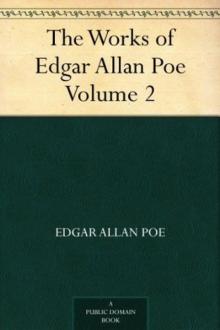 The Works of Edgar Allan Poe — Volume 2
The Works of Edgar Allan Poe — Volume 2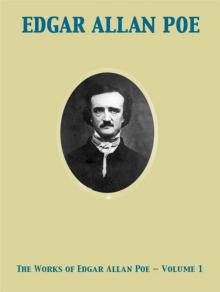 The Works of Edgar Allan Poe — Volume 1
The Works of Edgar Allan Poe — Volume 1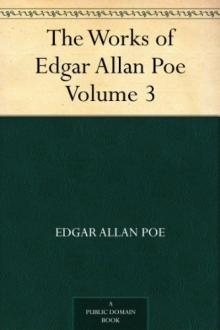 The Works of Edgar Allan Poe — Volume 3
The Works of Edgar Allan Poe — Volume 3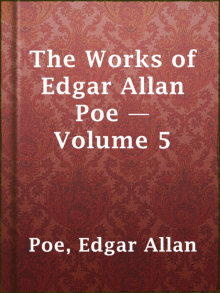 The Works of Edgar Allan Poe — Volume 5
The Works of Edgar Allan Poe — Volume 5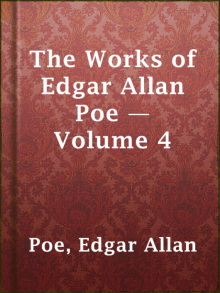 The Works of Edgar Allan Poe — Volume 4
The Works of Edgar Allan Poe — Volume 4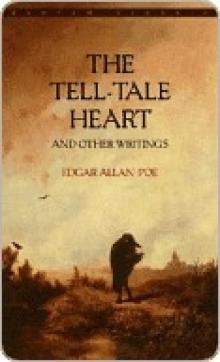 The Tell-Tale Heart
The Tell-Tale Heart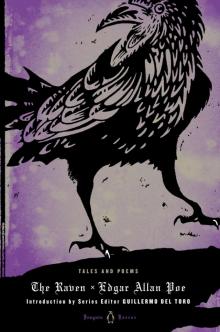 The Raven (Penguin)
The Raven (Penguin)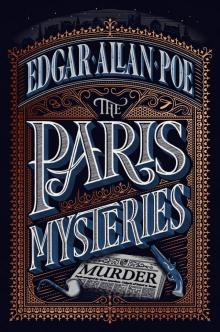 The Paris Mysteries
The Paris Mysteries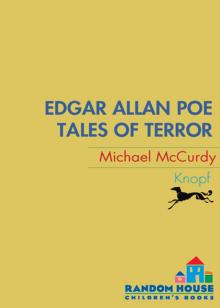 Tales of Terror from Edgar Allan Poe
Tales of Terror from Edgar Allan Poe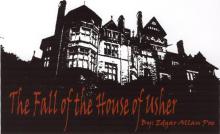 The Fall of the House of Usher
The Fall of the House of Usher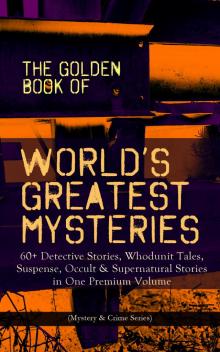 The Golden Book of World's Greatest Mysteries
The Golden Book of World's Greatest Mysteries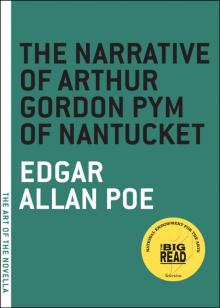 The Narrative of Arthur Gordon Pym of Nantucket
The Narrative of Arthur Gordon Pym of Nantucket Ligeia
Ligeia The Landscape Garden
The Landscape Garden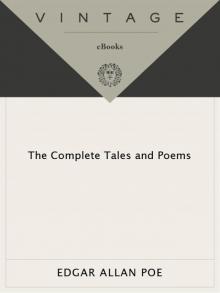 Complete Tales & Poems
Complete Tales & Poems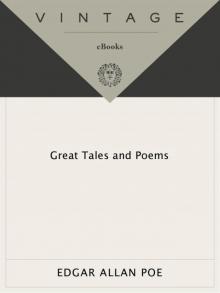 Great Tales and Poems of Edgar Allan Poe
Great Tales and Poems of Edgar Allan Poe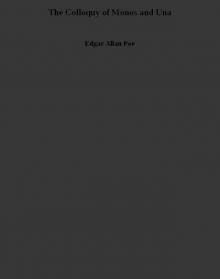 The Colloquy of Monos and Una
The Colloquy of Monos and Una The Oblong Box
The Oblong Box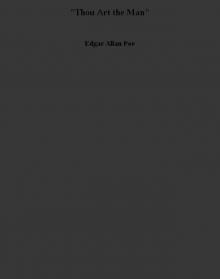 Thou Art the Man
Thou Art the Man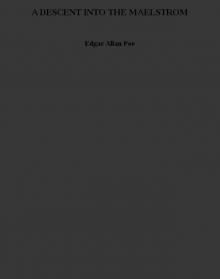 A DESCENT INTO THE MAELSTROM
A DESCENT INTO THE MAELSTROM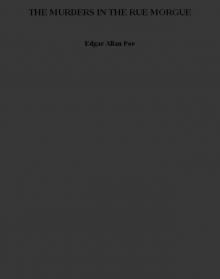 THE MURDERS IN THE RUE MORGUE
THE MURDERS IN THE RUE MORGUE The Business Man
The Business Man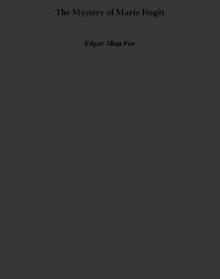 The Mystery of Marie Rogêt
The Mystery of Marie Rogêt Metzengerstein
Metzengerstein The Man That Was Used Up
The Man That Was Used Up William Wilson
William Wilson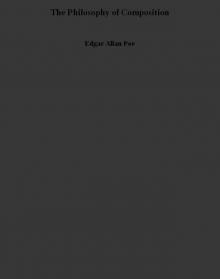 The Philosophy of Composition
The Philosophy of Composition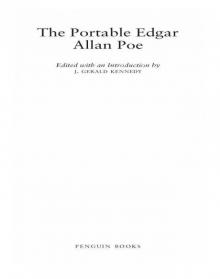 The Portable Edgar Allan Poe
The Portable Edgar Allan Poe Bon-Bon
Bon-Bon A Predicament
A Predicament The Premature Burial
The Premature Burial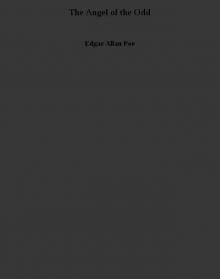 The Angel of the Odd
The Angel of the Odd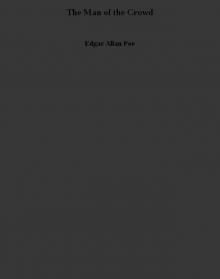 The Man of the Crowd
The Man of the Crowd Never Bet the Devil Your Head
Never Bet the Devil Your Head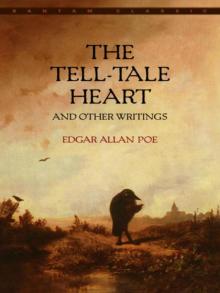 The Tell-Tale Heart and Other Writings
The Tell-Tale Heart and Other Writings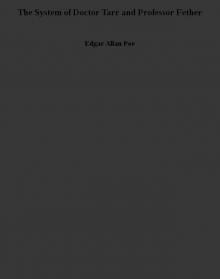 The System of Doctor Tarr and Professor Fether
The System of Doctor Tarr and Professor Fether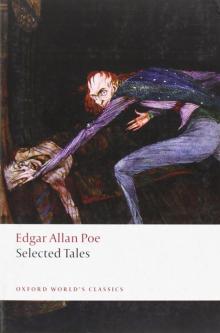 Selected Tales (Oxford World's Classics)
Selected Tales (Oxford World's Classics) Essential Tales and Poems of Edgar Allan Poe (Barnes & Noble Classics Series)
Essential Tales and Poems of Edgar Allan Poe (Barnes & Noble Classics Series) MS. Found in a Bottle
MS. Found in a Bottle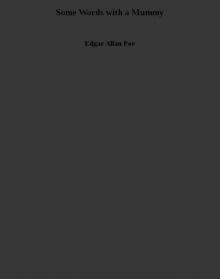 Some Words with a Mummy
Some Words with a Mummy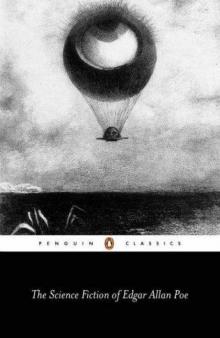 The Science Fiction of Edgar Allan Poe (Penguin Classics)
The Science Fiction of Edgar Allan Poe (Penguin Classics) King Pest
King Pest CRITICISM
CRITICISM How to Write a Blackwood Article
How to Write a Blackwood Article Mystification
Mystification Diddling Considered as One of the Exact Sciences
Diddling Considered as One of the Exact Sciences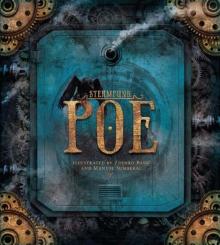 Steampunk Poe
Steampunk Poe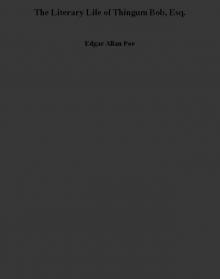 The Literary Life of Thingum Bob, Esq.
The Literary Life of Thingum Bob, Esq.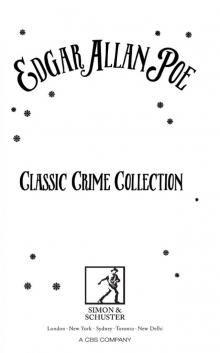 Classic Crime Collection
Classic Crime Collection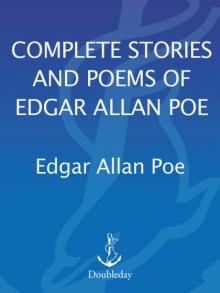 Complete Stories and Poems of Edgar Allen Poe
Complete Stories and Poems of Edgar Allen Poe Berenice
Berenice The Black Cat
The Black Cat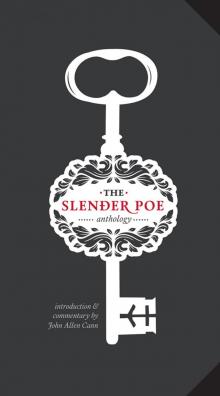 The Slender Poe Anthology
The Slender Poe Anthology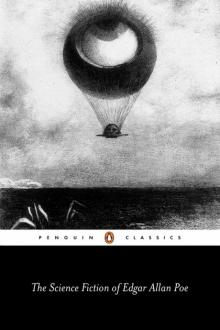 The Science Fiction of Edgar Allan Poe
The Science Fiction of Edgar Allan Poe The Assignation
The Assignation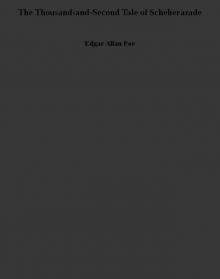 The Thousand-and-Second Tale of Scheherazade
The Thousand-and-Second Tale of Scheherazade The Raven and Other Short Stories
The Raven and Other Short Stories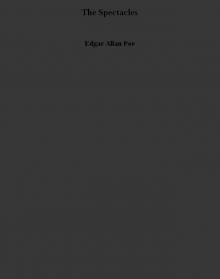 The Spectacles
The Spectacles Hop-Frog
Hop-Frog The Purloined Letter
The Purloined Letter Mellonta Tauta
Mellonta Tauta The Balloon-Hoax
The Balloon-Hoax Landor's Cottage
Landor's Cottage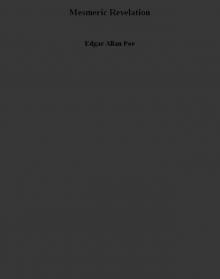 Mesmeric Revelation
Mesmeric Revelation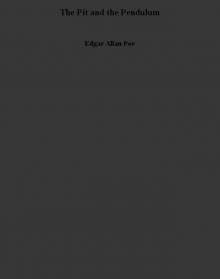 The Pit and the Pendulum
The Pit and the Pendulum